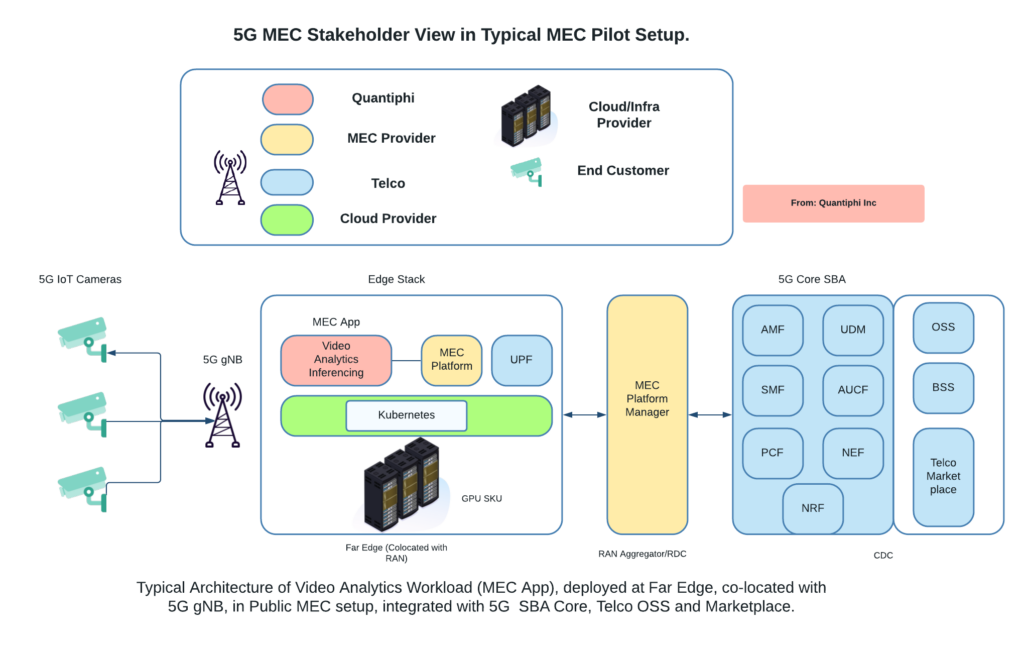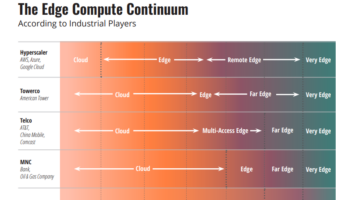Delivering Multi Access Edge Computing (MEC) business case pilot is all about successful collaboration and delivering value, by all participating stakeholders, to the end customer by building win-win business model. Although it sounds quite straightforward proposition, ground realities are quite complex to deliver use cases.
There are many reasons to why building a successful collaboration could fail and a telco mightn’t deliver business case and we will explore some of those pitfalls in this post.
One of the most important reasons we see, is what role to assume by the Telco in entire plot isn’t clear many times. There are three main options available to telcos in the plot:
- Connectivity & Real Estate Provider (CRaaS): Typically, this is the standard role a telco can assume without much fanfare. This is lowest in the ladder for telco and doesn’t require them to do much as part of MEC pilot.
- Marketplace Provider along with CRaaS: In this role, a telco offers much high value, where they assume a role of cloud provider, has 5GCore and MEC Components in place as Network functions and offering an ‘Edge Marketplace’ service where third-party vendors/Edge App makers partner and make their offerings available through marketplace on revenue-share model.
- SI for MEC: In this role, Telco offers end-to-end MEC Services, including above two mentioned. Nevertheless, this is the top role for telco and offers highest amount of revenue compared to other options.
If telco has already identified the different industry verticals to solve business problems, as part of their overall MEC strategy, then the job become easier on implementation side. We will cover this subject separately, as we see great dilemma among telcos on what use cases to target and why.
Now the challenge is many of the telcos aren’t either sure of or capable of assuming either of the above role at this stage (except CRaaS). Even assuming CRaaS role would require a telco to build edge real-estate, which is quite challenging task indeed and requires considerable amount of planning and CAPEX. Few of them tend to resort, utilizing their RAN Infra/Old BSC locations, but identifying real-estate to setup MEC Infra/Rack is quite a big challenge.
Moving up the ladder, marketplace and SI roles are quite challenging to assume at this stage, esp. many of the telcos are beginning their digital/cloud transformation journey and still haven’t reached to edge setup yet. There is exception though, and some of the leading telcos including in Europe, NA, and APAC, are looking at playing these roles and delivering pilots. We will discuss those aspects in next series of blog.
Apart from telco, there are few more important stakeholders who participate in typical setup. We will take a real-world example, involving public cloud provider or CSP (Cloud Service Provider) or Hyperscalars.
CSPs are new breed of stakeholders or partners in telco ecosystem these days vying for pie of 5G revenues. They bring the cloud, infra and platform capabilities on table, which typically telcos don’t have and considered the most important piece of puzzle. CSPs moreover leverage few more partnership and bring few more stakeholders such a ISVs (Independent Software Vendors) or NFP (Network Function Providers) or other ecosystem players. A good example is Azure MEC Partner program which highlights ecosystem partners for MEC. We will delve deep into CSP-Telco partnership which extends beyond MEC/Edge normally in another blog, but right now, let’s assume CSPs bring not only platform/Cloud/Orchestration but partners including ISVs and others to MEC pilot.
Many of the hyperscalars, including AWS, Azure and Google, have already built, or building custom solutions/offerings for telcos to deliver MEC business cases and telcos across globe are already forming partnership to leverage this.
Then there are end customers, who are also the consumers of MEC Offerings. This could be any industry vertical persona, including manufacturing plant, Warehouse Provider, Hospitals, Stadium, Retail Outlet, and many others.
The important piece of MEC setup or business case is ISV provider or MEC App Provider. Typically, they work closely with Hyperscalars or even some of the telcos have identified such solution providers already and delivering pilots with them.
Important question remains, how about MEC Components? Who would be MEC Solution Providers?
Typically, these could be leading telco OEMs offering MEC Platform or Application Functions as well as 5GC (SBA) together. There are few instances where CSPs brought them in and in other cases telcos already have partnerships in place for that, completing the entire stakeholder mapping for MEC Use case deliverables.
We at Quantiphi. a leading ISV partner of Google Cloud, are involved into different MEC solution pilots, and we will talk about a specific example here.
Assuming a telco, who is already in discussion with a leading hospital in the town, wants to implement a visual asset tracking solution at one of their main campuses, on 5G. Delivering such solution requires building video analytics inferencing at hospital premises, in partnership with Google Cloud. We will not deep dive into architecture components of solution, but high-level setup would look something like below.
To deliver the business case, these will be important stakeholder partners (with suitable assumptions):
- Telco (Mostly has marketplace, MEC and 5GC solutions along with CRaaS (Option 2)).
- Hospital (End Customer and consumer of MEC Services).
- Google Cloud (Anthos On-prem multi-cluster setup providing Infra/Platform/Orchestration and Monitoring).
- Quantiphi (Visual Asset Tracking Solution maker (MEC App Provider)).
Pls note, below setup is just representation of many options available, and actual deployment setup could vary considerably.

The list of stakeholders could vary from telco to telco and from use case perspective, but it gives us high level understanding of complexities involved into delivering MEC Business cases. In the end, it’s about building right business models, and win-win partnerships to deliver value to end consumer.
(All view expressed are independent and not linked to any of the mentioned providers/partners or company. Author doesn’t promote any Cloud Provider or solution provider).
(References: ETSI MEC Specifications page.)





